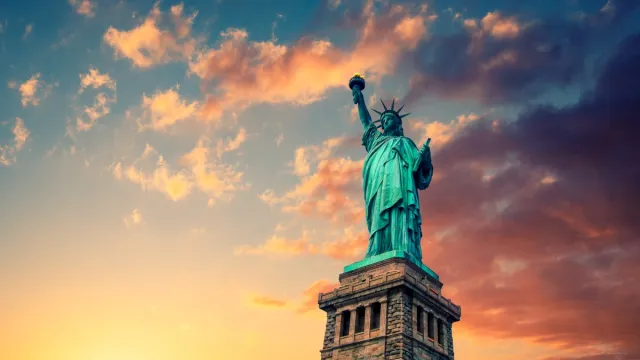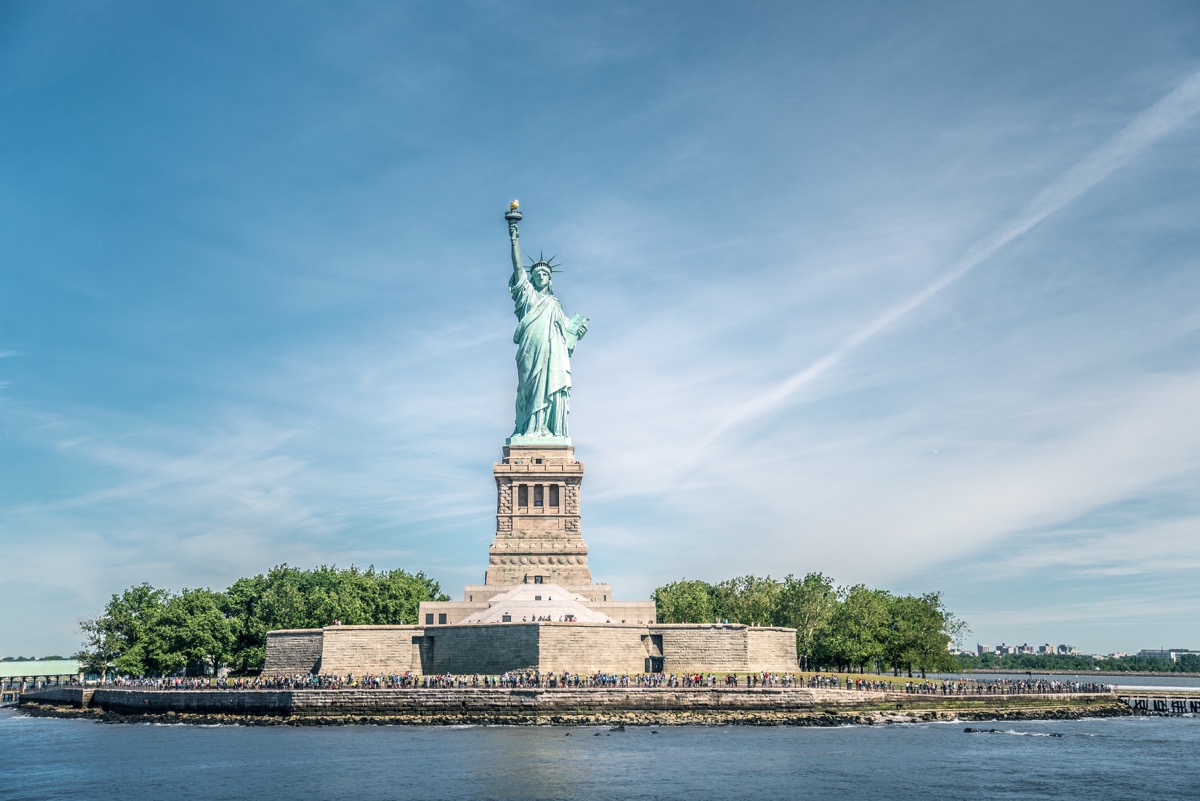The Shocking Secret You Didn’t Know About America’s Most Iconic Monument

Lady Liberty—you know her well. With her regal crown and shining torch, the 305-foot monument in New York City’s harbor is widely celebrated as a beacon of freedom for all. But the original purpose of the statue is actually more pointed than what you’ve been taught in school. While you may have thought that she was created to welcome immigrants to America, the Statue of Liberty was actually designed to commemorate the end of slavery.
The monument was imagined by French author and anti-slavery activist Édouard René de Laboulay, who was president of the French Emancipation Committee that raised money for newly freed slaves in the United States. In 1865, he organized a group of French abolitionists to discuss the idea of a gift that would honor the liberation of slaves after the Civil War.
Laboulaye teamed up with sculptor Frédéric-Auguste Bartholdi, who was inspired by Libertas, a Roman goddess often portrayed with a Phrygian cap worn by freed Roman slaves. Bartholdi’s initial model, done in 1870, shows Lady Liberty in the same stance—right arm raised holding the torch—but in her left hand, she grips broken shackles to represent the end of slavery and human bondage, according to the Washington Post. In the final structure, which now draws 4.5 million annual visitors, Lady Liberty holds a tablet in her left hand with the Roman numerals for July 4, 1776, Independence Day. The broken chains still remain, but they are hidden beneath her feet and nearly invisible to tourists.

After completing the statue in Paris in 1884, Bartholdi spearheaded its building on Bedloe’s Island in New York, and finally unveiled “Liberty Enlightening the World” on Oct. 28, 1886. However, by then its original significance and symbolism had been long forgotten. At this time, the Reconstruction era was over, Jim Crow laws were enacted, and the Supreme Court had rolled back civil rights protections.
RELATED: For more up-to-date information, sign up for our daily newsletter.
In fact, to many in the Black community, it seemed overtly hypocritical. One 1886 editorial in the Cleveland Gazette, an African-American newspaper that is available for view at the Statue of Liberty Museum, said: “Shove the Bartholdi statue, torch and all, into the ocean… until the ‘liberty’ of this country is such as to make it possible for an inoffensive and industrious colored man in the South to earn a respectable living for himself and family, without being ku-kluxed, perhaps murdered, his daughter and wife outraged, and his property destroyed. The idea of the ‘liberty’ of this country ‘enlightening the world,’ or even Patagonia, is ridiculous in the extreme.”
In 1892, six years after the Statue of Liberty was erected, Ellis Island opened as an inspection station for the millions of immigrants coming to America. It wasn’t until 1903 that the famous plaque inscribed with Emma Lazarus’ poem “The New Colossus” (“Give me your tired, your poor/Your huddled masses yearning to breathe free”) was added—all but rewriting the history of what this statue first stood for. And for more incredible Black history facts, discover The Biggest Achievement African Americans Made the Year You Were Born.